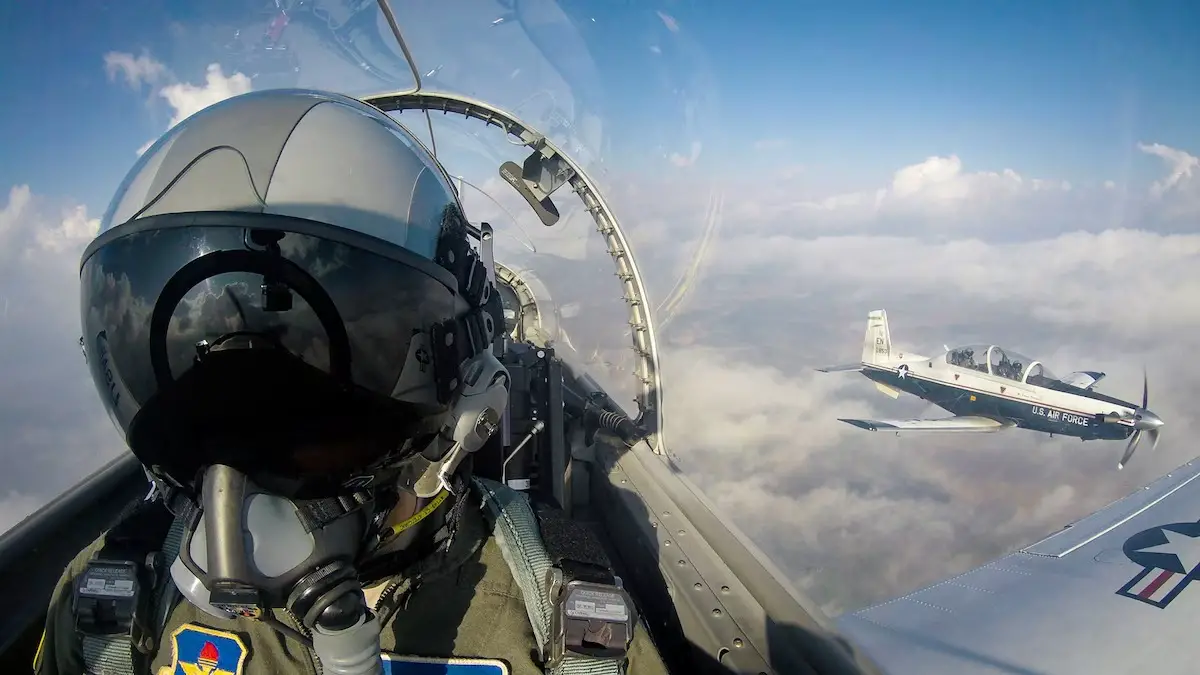New technologies are pushing the frontiers of air power, hence the need to push the endurance limits of human pilots. China is harnessing the power of its centuries-old exercise ‘qigong’ to turn its elite pilots into ‘super pilots.’
Qigong, a thousand-year-old practice, works by harmonizing the flow of qi through the body. Qi is the vital energy that circulates through the body at all times. Qigong seeks to achieve a state of balance between heaven, Earth, and humanity.
A group of People’s Liberation Army-Air Force (PLAAF) fighter pilots are harnessing the body’s vital energy to improve muscle development. The pilots operating fighter jets from China’s aircraft carrier are also part of this group of 50 men.
Research quoted in the South China Morning Post has found qigong to be “remarkably effective.” A peer-reviewed paper published in the Chinese Journal of Rehabilitation Medicine this month revealed that, compared to pilots engaging solely in Western-style exercise, those practicing qigong have seen an average increase of 15 percent in the thickness of their core muscle groups, including their back and waist muscles. Stronger core muscles reduce the risk of lower back pain in fighter pilots.
The report claims that the training of the Chinese fighter pilots is more intense than that of their American counterparts, posing “unprecedented” challenges to their physical endurance.

Muscle mass is important for pilots as they encounter substantial G-forces while flying. Prolonged exposure to G-forces exceeding 7G can lead to musculoskeletal injuries, particularly affecting the cervical and lumbar vertebrae. Musculoskeletal disorders rank as the predominant health issue among military pilots.
High-performance fighter aircraft produce high-sustained +Gz forces. Because of this G-producing capability, military pilots are subjected to physiological stress, which may lead to visual disturbances and G-induced loss of consciousness (G-LOC).
G-force or gravitational force is used to explain sustained accelerations that cause weight perception. An object at rest on Earth’s surface experiences 1g. Fighter pilots increase their tolerance of g-forces in two ways. One is that they train for it using centrifuges (which create artificial Gs) and learn specialized breathing and muscle-tensing techniques. The other is that they wear anti-G suits.
In the 1980s, when the F-15 Eagle joined the Japan Air Self-Defense Force (JASDF), there was a spike in musculoskeletal problems of the spine among pilots. Serious cases of neck injury were reported.
Research on 129 F-15 pilots from different air bases in Japan showed that 115 (89.1%) reported flying-related muscle pains. Of those who experienced pain, 95 percent of cases occurred among F-15 pilots.
The “checking six” position was the most common posture at the time of injury, followed by the “forward bend.” Of the 115 pilots, 44 stated that their symptoms adversely affected flight duty performance, and 50 pilots stated that their symptoms adversely affected daily life.
‘Go’- ‘No Go’ Pill
New-age technologies have turned war into a 24x7x365 event. Fatigue is a significant limiting factor. Pilot fatigue is largely attributed to unpredictable work hours, long duty periods, circadian disruptions, and insufficient sleep, which are commonplace in military flight operations.
Besides working on the cardio-respiratory health of fighter pilots and improving their muscle mass, air forces across the world are experimenting with chemical stimulants and sleeping to push the physiological boundaries of human bodies.
Since the last century, fighter pilots have been using two kinds of drugs: go-pills and no-go pills. ‘Go pills,’ as the name suggests, are a form of stimulants that increase the activity of the central nervous system. Amphetamines are used as ‘go pills’ and go by the street name of ‘speed.’ Military pilots use it to solve the problem of pilot fatigue, which can creep up on aviators during long missions.
In present times, modafinil is used as a ‘Go-Pill.’ Modafinil has been shown to improve spatial planning, pattern recognition, and working memory, besides boosting overall cognitive performance, alertness, and vigilance during situations of extreme fatigue.
The ‘No-go’ pills are depressant substances that slow down the brain’s activity, reducing alertness and inducing sleep. The No-Go pill is Zolpidem, a sedative used to treat insomnia.
The Indian Air Force in 2016 authorized the use of Go and No-Go pills to boost alertness levels and cognitive powers and fight fatigue and sleep deprivation during round-the-clock aerial exercise ‘Livewire.’ It was a 24×7 exercise simulating war, which requires high adrenaline levels and the ability to push the envelope.
In the age of mid-air refueling, the range of aircraft has increased manifold, and fighter pilots need to keep pace with it. The use of these medications by military personnel is actually more highly controlled and limited than their civilian counterparts.
In USAF fighter pilots and bombers, the use of the stimulants Dextroamphetamine and Modafinil are only approved for specific long-duration sorties in very particular aircraft in which a pilot may be alone or unable to stand up and move.





